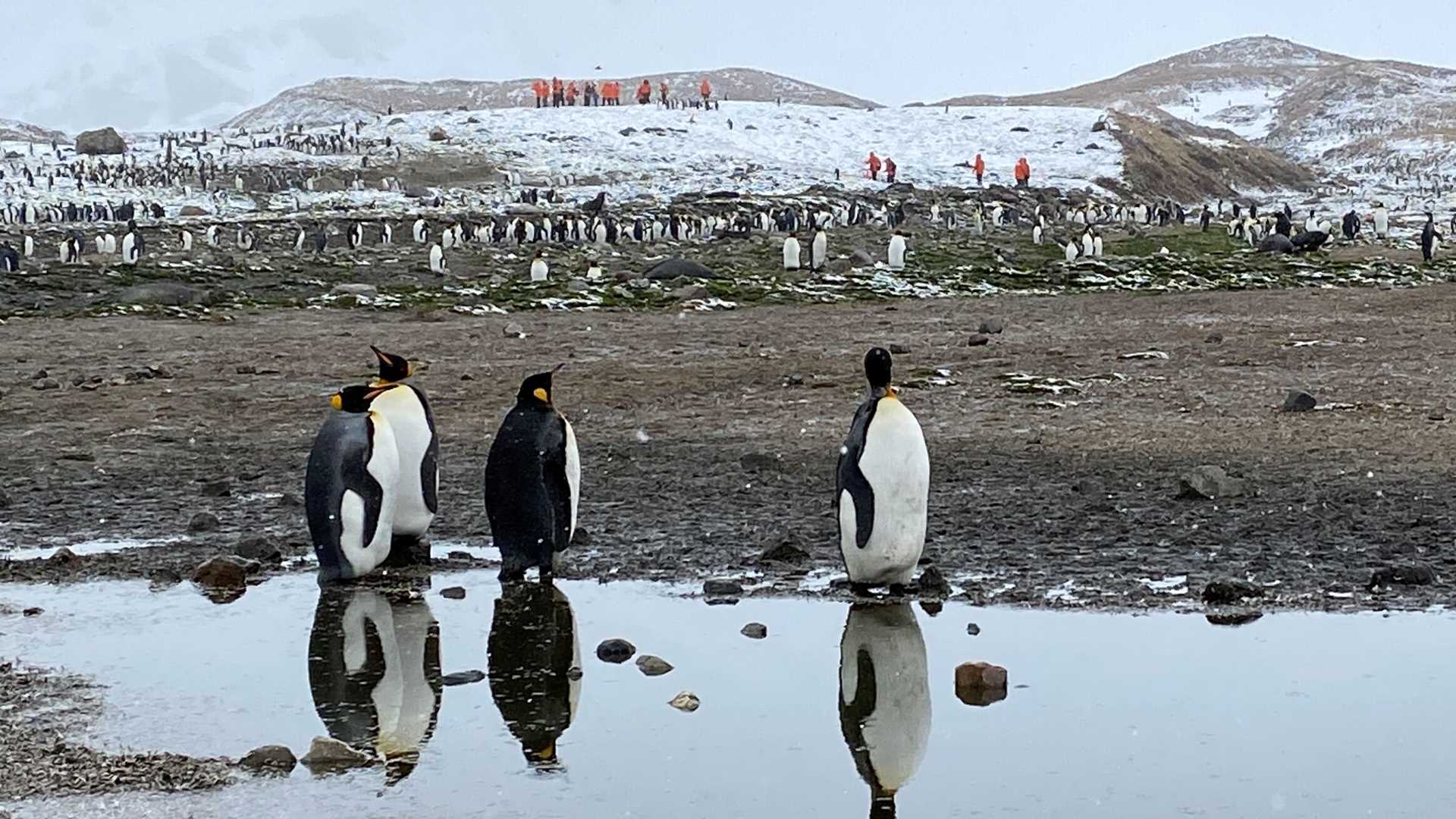This morning’s time in St. Andrews Bay focused on king penguins, with more than 150,000 breeding pairs plus multitudes of chicks residing on the beach and glacial outwash plain in the island’s largest colony. The spectacular king penguin reaches over two feet tall with bright yellow-orange coloration on the head, neck, and bill. Males and females each have unique calls, used to identify a suitable mate and subsequently to locate one’s partner with egg or chick amongst the vast colony. After learning about acoustic research the evening prior, we tried differentiating the calls for ourselves and enjoyed the overall cacophony of penguin communications.
Unlike the smaller penguins of the Southern Ocean region, for kings the courtship to chick fledging process takes fourteen months. Therefore, we witnessed all sorts of interactions in the colony today, including penguins returning from foraging trips at sea, parents feeding chicks, birds bathing in the river, and many individuals mid-moult. The ground was littered with feathers blowing with the day’s blustery snow showers; the smells of the St. Andrews beach added to our powerful, multi-sensory visit. South Georgia’s king penguin population is growing, with new breeding colonies forming as glacial retreat opens new waterfront habitat.
Although the wind increased significantly in the afternoon, most of our group ventured ashore in Moltke Harbour for walks in Whale Valley. An expansive network of braided streams bracketed by the steep walls of a U-shaped ice-carved valley and a group of very vocal elephant seals provided plenty to look at despite the gusty conditions. As dinner time approached, the skies cleared and the breathtaking scenery of South Georgia to its highest elevations came into view for the first time since our arrival – what a gift to end the day!









